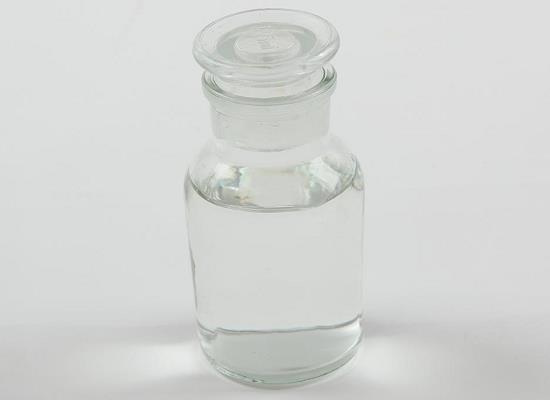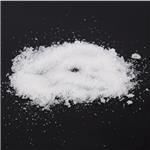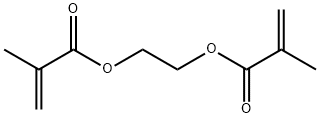Ethylene Dimethacrylate: Applications as NH3 Adsorbent and its Analytical Methods
General Description
Ethylene Dimethacrylate serves as a remarkable adsorbent for NH3, offering a sustainable alternative to toluene-based NH3-MIPs. Through optimized reagent composition, NH3-Ethylene Dimethacrylate adsorbents with reduced toluene usage exhibit superior NH3 adsorption capacity and selectivity. Analytical methods like High performance liquid chromatography and mass spectrometry play key roles in characterizing Ethylene Dimethacrylate, with techniques such as TLC and polarography ensuring its detection and quantification in diverse settings. These analytical approaches collectively enhance our understanding and application of Ethylene Dimethacrylate in industries requiring efficient NH3 separation and environmentally friendly practices.

Figure 1. Ethylene Dimethacrylate
Applications as NH3 Adsorbent
Enhanced NH3 Adsorption Capacity and Selectivity
Ethylene dimethacrylate has been utilized as an effective adsorbent for NH3, addressing the need for a cost-effective and environmentally friendly alternative to toluene-based NH3-MIPs. This study aimed to optimize the reagent composition of NH3-MIPs, leading to the development of NH3-Ethylene Dimethacrylate adsorbents with reduced toluene usage while maintaining high NH3 adsorption capacity and selectivity.
Adsorption Performance and Mechanism
Five different adsorbent groups, including NH3-MIPs and NH3-Ethylene Dimethacrylate with varying toluene reduction efficiencies, were prepared and assessed for their adsorption performance. The results demonstrated that NH3-Ethylene Dimethacrylate with 75% toluene reduction exhibited exceptional NH3 adsorption capacity (104.42 mg g-1) and high separation factors for NH3/methyl sulfide and NH3/dimethyl disulfide. The adsorption mechanism was identified as a chemical force between NH3 and NH3-Ethylene Dimethacrylate using kinetic model analysis, highlighting the efficacy of the optimized adsorbent composition.
Implications and Benefits
The utilization of NH3-Ethylene Dimethacrylate with reduced toluene usage not only significantly reduces the cost of NH3 adsorbent production but also minimizes environmental harm, thus making it a more sustainable option for widespread application. The findings of this study hold considerable promise for the cost-effective and eco-friendly utilization of NH3-Ethylene Dimethacrylate adsorbents, thereby contributing to the advancement of NH3 separation and recovery processes in various industrial and environmental applications. 1
Analytical Methods
High-Performance Liquid Chromatography for Ethylene Dimethacrylate
High performance liquid chromatography is a primary method for analyzing Ethylene Dimethacrylate, particularly in determining its behavior and partition coefficients in various solvents. Using reverse-phase High performance liquid chromatography with different columns, such as C18 Corasil and C8 Lichrosorb, researchers can accurately measure the retention times of Ethylene Dimethacrylate and similar compounds. This technique helps in assessing the solubility and interaction of Ethylene Dimethacrylate with 1-octanol and water, providing valuable data for understanding its environmental and biological interactions. The partition coefficients (Log P) obtained from these measurements are crucial for predicting the movement and deposition of Ethylene Dimethacrylate in various systems.
Mass Spectrometry for Ethylene Dimethacrylate Identification
Mass spectrometry, including electron-impact and methane chem-ionization modes, is another analytical method utilized for the detailed identification of Ethylene Dimethacrylate. These techniques are particularly useful in complex matrices such as dental materials, where Ethylene Dimethacrylate is commonly used as a monomer. The combination of ionization methods offers comprehensive spectral data, allowing for precise identification of Ethylene Dimethacrylate in mixtures. This spectral analysis is integral for confirming the presence and purity of Ethylene Dimethacrylate in products, ensuring that the materials meet specified quality and safety standards.
Additional Analytical Techniques for Ethylene Dimethacrylate
Further analytical methods such as Thin-Layer Chromatography (TLC), polarography, and spectrometry are employed to measure Ethylene Dimethacrylate in various environments. These techniques are vital for detecting Ethylene Dimethacrylate in air and determining residual monomers in polymers. Polarography, in particular, is effective for quantifying low levels of Ethylene Dimethacrylate, ensuring that the final products are free from significant quantities of unreacted monomer. These methods provide essential safety and compliance information, critical for both environmental and industrial applications of Ethylene Dimethacrylate.
These methods together create a robust framework for analyzing Ethylene Dimethacrylate in different contexts, ensuring comprehensive monitoring and quality control. 2
References:
[1] ZHANGLIANG HAN. Ethylene dimethacrylate used as an NH3 adsorbent with high adsorption capacity and selectivity.[J]. Chemosphere, 2022, 293. DOI:10.1016/j.chemosphere.2022.133539.See also
Lastest Price from Ethylene dimethacrylate manufacturers

US $100.00/KG2025-04-21
- CAS:
- 97-90-5
- Min. Order:
- 1KG
- Purity:
- 99%
- Supply Ability:
- 100 mt

US $999.00-800.00/kg2025-04-21
- CAS:
- 97-90-5
- Min. Order:
- 1kg
- Purity:
- 99%
- Supply Ability:
- 5000


